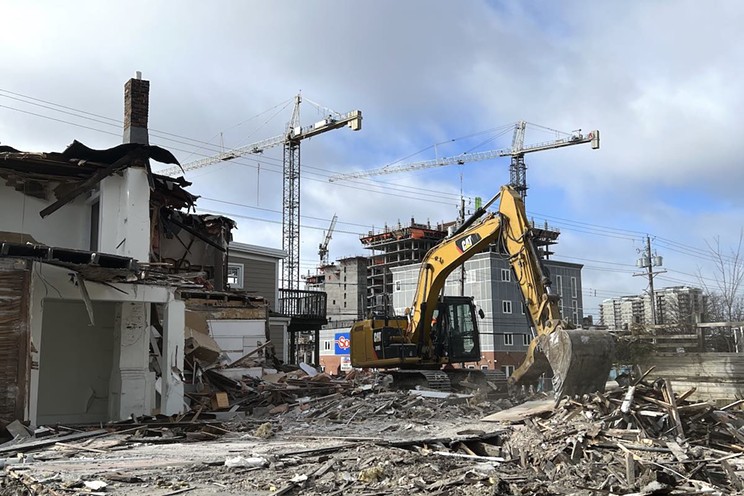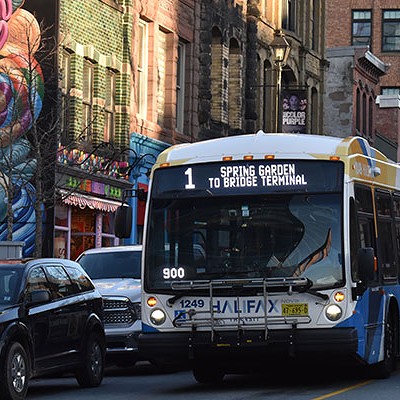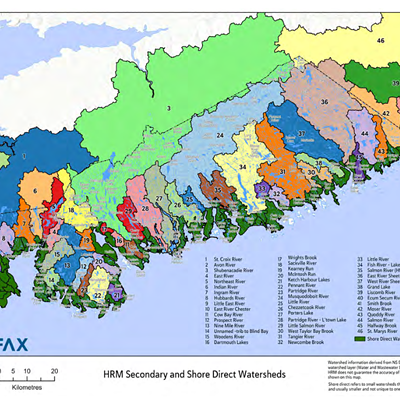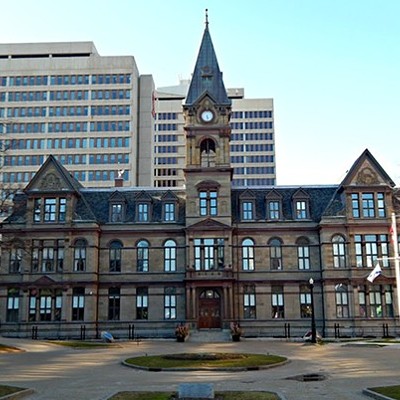On Tuesday, June 20, the Halifax Regional Municipality’s committee of the whole will meet before the normal council meeting. For people who have active social lives, the committee of the whole is still a formal meeting of council, but the rules around debate are more relaxed so councillors can have a more fulsome discussion about an issue or report. In this case, they’ll be considering the holistic plan for the future of the HRM in the super boringly titled Regional Municipality Planning Strategy Draft, dated June 2023.
This planning strategy is a dense policy document that will dictate how the city of Halifax grows into the future. As The Coast has reported, Halifax abandoning its pre-car urban planning in favour of adopting the post-war North American trend of motorist-based suburban sprawl has made the city extremely vulnerable to the climate emergency burning through our backyards.
This report will take some time to fully digest, but there are a few big early takeaways lightly camouflaged by bureaucratic jargon. They are the proposed changes to development charges, and municipal service boundaries.
Development charges
As the city learned in 2003, 2013 and 2023, the suburbs are a Ponzi scheme. This pattern of development has made the HRM increasingly fiscally fragile, and it’s made development and real estate companies increasingly rich. What happens, like what happened in Indigo Shores, is that a developer will install a suburb with as few frills as possible, like not enough fire hydrants and not enough transit options, so the city then needs to come in and install and maintain all of the additional infrastructure that should have been built in the first place.
This has been such a huge windfall for developers because the fees the city charges them are extremely low and nowhere near enough to cover the cost of development. Effectively, the nominal taxpayer is subsidizing developer profits in the HRM. And there have been decades of developers and politicians pushing to keep fees low to encourage new investment into the suburban growth scheme. Which in turn laid the foundation for Tantallon to be the death trap it was exposed to be a few weeks ago.
This municipal plan aims to make developers pay their fair share to develop the city, which, up to this point, they have not adequately done.
The municipal service boundary
This boundary will remain largely changed until the population within it has reached one million. All future growth is planned for areas of the HRM with the service boundary, and that’s it (for a long while, barring a handful of exceptions that are already underway). One of the ways to save a cash-strapped city a bunch of money is to get more people to pay for existing infrastructure. And how do we get people to pay for more infrastructure? By making everywhere that has water service more densely populated.
Not changing the municipal service boundary while we grow. It’s deceptively simple, but it’s wildly controversial. And on top of that…
This plan doesn’t expire
Previous municipal planning documents only lasted around 10 years before council would revisit them. This municipal plan doesn’t have an expiration date. It’s been informed by decades of public participation, but as the activist community often tells council—with a palpable frustration—that change is happening at a glacial pace. This happens in part because it doesn’t really make sense to invest big money on something that can disappear in 10 years time at the whim of a future council.
With no expiry date, that should—in theory—remove institutional reluctance to commit to the long-term implementation of this plan. This should start to give our municipal bureaucracy the flexibility it needs to respond effectively to the growing threats of inequality and the climate emergency.
The city is seeking public feedback on this plan for the next four months. And the evidence of our municipal government listening to us is everywhere in this policy document. But it’s likely going to be a pretty major fight to get this plan to be implemented as is, with all the good sustainable policies in it. Because the development fee changes and the planned densification of existing suburban landscapes are going to directly affect the two groups of people who have historically had the most power in shaping this city: Developers and land owners.
If we want to change our current trajectory, if we want to live in a sustainable city, we need to be loud as hell for the next four months. Be relentless in your communications with your councillor. Tell them keeping the municipal service boundary where it is will decrease your taxes and save the planet. Go to meetings. Do the public engagement surveys. Leave comments with city staff at pop-up events and tell them equity and climate action are important to you, and that’s why development charges need to be high enough to cover the installation and maintenance of required public services. Demand the implementation of boring policy. Tell your friends, tell your neighbours. We have a boring, but tangible shot at making Halifax a world-class city like the endless staff reports always tell us we could be.













